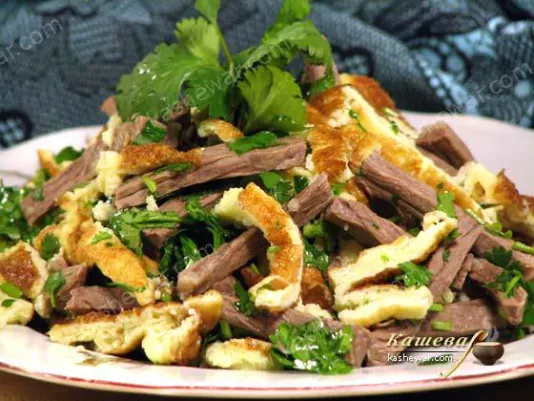Uzbek Bread Patyr
Uzbek bread Patyr is a soft, aromatic bread with a crispy crust.

Uzbek cuisine is a true culinary treasure of Central Asia that reflects the centuries-old history of nomadic tribes, Persian traditions, and the influence of the Silk Road. Each dish is not just a combination of ingredients but a deep cultural practice where communal meals, generosity, and the aroma of spices play an important role. Hospitality has always been highly valued in Uzbek culture, so the table is always generously set – even for an unexpected guest. The cuisine is based on meat, especially lamb, as well as rice, dough, vegetables, spices, and dairy products. Bread baked in a tandoor holds a special place and is considered sacred. Thanks to its authenticity and unique flavor, Uzbek cuisine has become popular far beyond Uzbekistan.
Uzbek recipes are impressive in their variety and simplicity. At the heart is pilaf, prepared in dozens of ways depending on the region: Fergana, Bukhara, Tashkent. It typically includes rice, fried meat, carrots, and onions with spices, often complemented by chickpeas, garlic, or raisins. Another classic is manti – large, juicy steamed dumplings with meat filling. Samsa is a stuffed pastry baked in a tandoor, and lagman is a soup or noodle dish with meat and vegetables in a rich broth. Other noteworthy dishes include shurpa, mastava, khash, halim, and chuchvara. Nearly every dish has its own seasonality and ceremonial significance, making Uzbek cuisine deeply embedded in both everyday and festive life.
In Uzbekistan, food is more than just a means to satisfy hunger – it is a symbol of respect, hospitality, and communication. Important life events – weddings, childbirth, Muslim holidays – are always accompanied by communal meals, where the table is filled with traditional dishes. The eldest family member holds a special role, beginning the meal with a prayer. Tea is served with particular care: it is poured into a piala three times and poured back before finally being served – a gesture of respect. Uzbek bread – lepeshka – is never placed upside down, never cut with a knife, and is always kept in a special container. Even the placement of dishes on the table matters: the most important ones are placed closer to the honored guest. All of this forms a coherent philosophy – a respectful attitude toward food as a gift.
Uzbek cuisine is based on local products – meat (lamb, beef), grains (mostly rice), vegetables (carrots, onions, peppers), legumes (chickpeas), and dairy. Main dishes are prepared in a kazan – a large cauldron with a thick bottom that ensures even frying and stewing of ingredients. The tandoor – a clay oven – is also widely used to bake bread and samsa. A steamer is often used for cooking manti. Many dishes include spices such as cumin, barberry, turmeric, red pepper, and garlic. Popular sauces include fermented dairy (katyk) and tomato-based ones. Even a simple salad of tomatoes, onions, and herbs plays an important role as a side to hot dishes. The cuisine also embraces improvisation: recipes are often passed down orally and adapted by each family.
Each region of Uzbekistan has its own culinary features. In the Fergana Valley, richer dishes prevail, especially pilaf with plenty of meat and oil. In Bukhara, dishes with dried fruits and spices are common, while in Samarkand, unique techniques for preparing dough and baked goods dominate. Mountain regions consume more dairy and dried meat. Seasonality also plays a role: in winter, hearty dishes such as khash, mastava, and shurpa are preferred, while summer brings vegetable dishes, cold soups, salads, and fermented dairy drinks. This is influenced by the climate and methods of preserving food. Even pilaf recipes change by season: winter versions include more fat and meat, while summer variants are lighter, often with raisins and carrots.
Today, Uzbek cuisine is gaining popularity far beyond Central Asia. Restaurants serving national dishes are opening in Europe, Turkey, Korea, the USA, and the Middle East. Uzbek culinary schools have begun developing standardized recipes for the global gastronomic scene. This helps preserve authenticity while adapting presentation and ingredients to local contexts. Social media is home to bloggers cooking Uzbek dishes at home, and chefs are experimenting by fusing pilaf with elements of fusion cuisine. At the same time, in Uzbekistan itself, food remains a vital part of daily life. It brings people together at the table, preserves traditions, and provides a space for passing on culinary heritage to future generations.